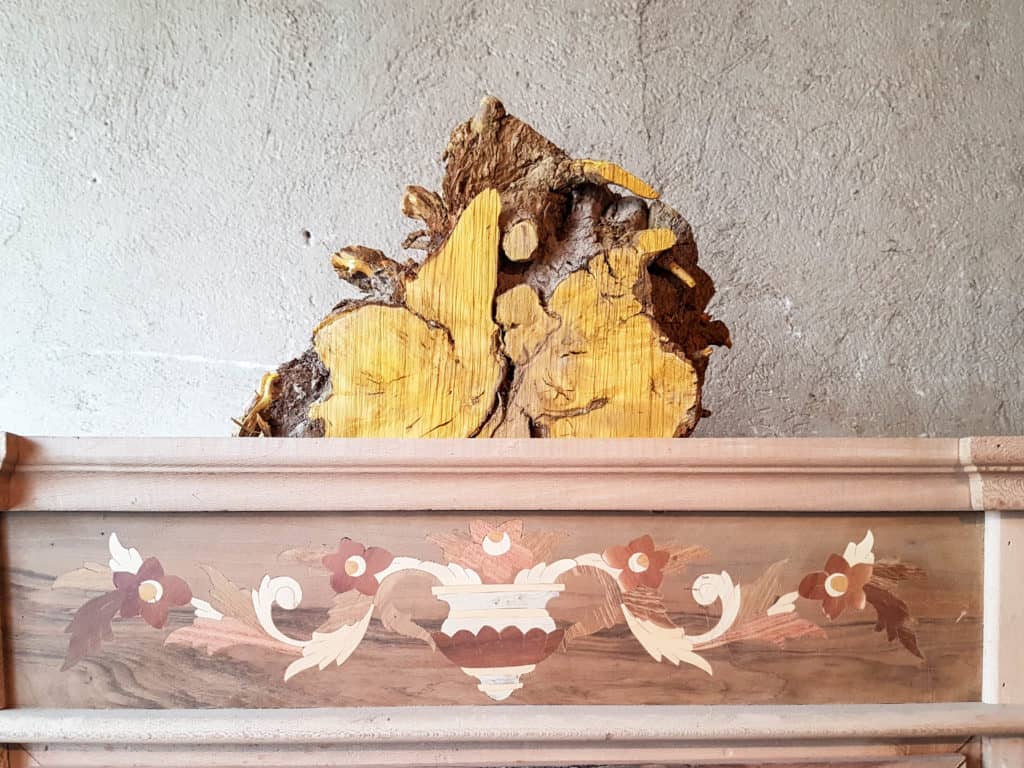
East Azerbaijan, Iran., This example of mooarraq (marquetry) comes from the workshop of Mehdi Ebrahim Puri in Tabriz. Above is one of woods they use – the yellow Zaresh. It’s estimated that every table involves about 300 kilometres by saw. That’s quite a journey.
To help extend the dialogue across the Asia Pacific and beyond, each issue of Garland features an online exhibition. This will include images of works related to a particular theme sourced from a diversity of locations. The works will be sourced by a call-out through Garland and editorial board network. In return, it is hoped that artists find this a useful way to promote their work and be engaged in a transnational dialogue.
The third issue of Garland will coincide with the Cairns Indigenous Art Fair in July 2016.
Nature craft
The modernist Western view of nature is of a realm that needs to be controlled. What is human is defined against the wild and unregulated force of nature.
“Only we now have erected the objectivity of a world of our own from what nature gives us, who have built it into the environment of nature so that we are protected from her, can look upon nature so that we are protected from her, can look upon nature as something ‘objective’. Without a world between men and nature, there is eternal movement, but no objectivity.”
Hannah Arendt The Human Condition Chicago: University of Chicago Press, 1958, p. 137
By contrast, the current anthropocene era considers nature and humans as inter-dependent. Humans are forever beholden to natural forces such as Gaia, while nature is influenced by the sum total of human activity in the planet.
“To ecologize is not to remove all meddling human hands from the pristine virginity of nature, but to compose the common world that comprises natural, cultural, real, imaginary, animate, inanimate, and all other actors by means of “due process”.
Harman, Graham. 2014. Bruno Latour: Reassembling the Political. Pluto, p.68
The story of craft as an art of civilisation is one of controlling nature. The properties of natural substances are mastered in order to manipulate them into unnatural forms for utility and beauty. What might be a craft of the anthropocene era, where nature and human are intertwined? How does craft practice reflect an ecological relation to nature, where the process of making plays a role in the sustainability of materials. And how can nature influence the making process?
Submissions
The Nature Craft online exhibition is seeking submissions of works that show a mutual relationship between nature and craft. This can involve a before and after shot of the raw material and the product that emerges. It can include work for which nature exercises an independent power.
Please send images or links to video to the following site: https://www.dropbox.com/request/JwAPbbqFiflbpGII8fBW I
Images should be of handmade objects that reflect the theme ‘Nature craft’. Images must be a minimum of 1,000 pixels wide. Each image should be accompanied by details including:
- Title of work
- Where it was made
- Materials used
- Dimensions of object
- Photographer
- A sentence with relevant information about the object
- Website of the artist, if available
- Email address
Please send any enquiries to threads@garlandmag.com. Submissions are due 10 June 2016.


Comments
Wishing I had seen this two days earlier. Cant wait to see the exhibition.
That’s a shame. Please subscribe to our newsletter to make sure you get notice of any future calls.